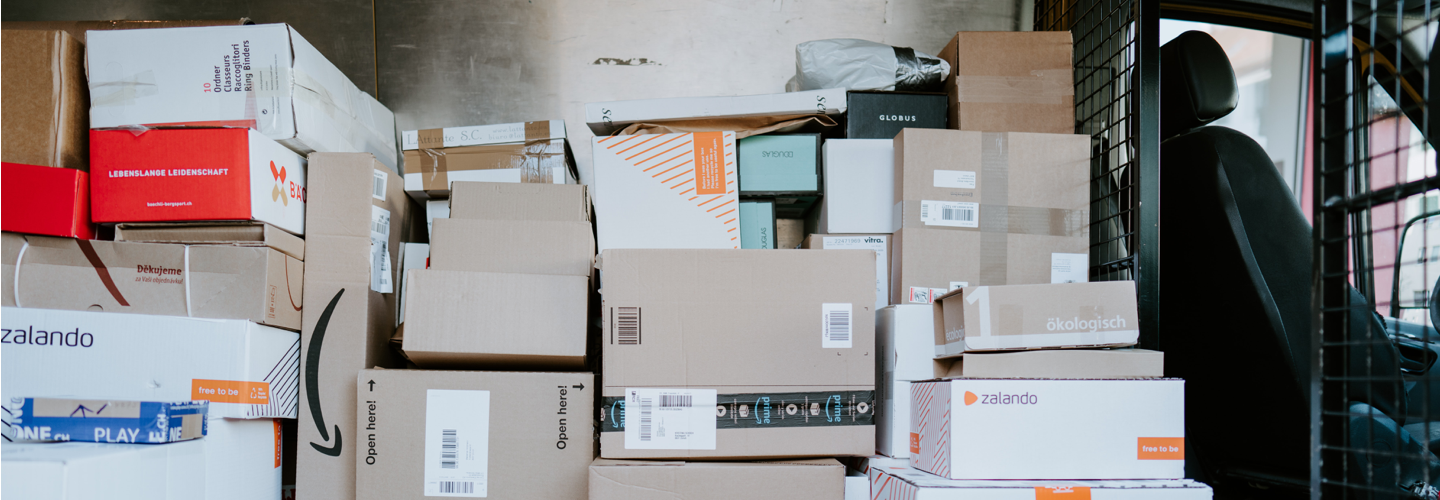Click & Collect Is Here & To Stay
In these uncertain times, offering »click & collect« services can return some normalcy to your retail business. But even after lockdown measures are eased, chances are high they're not going anywhere. In fact, this may be just the right moment to merge brick and mortar with browsing and clicking. And add new value to both.
Roughly one third of consumers say they are highly likely to continue buying everyday items online and pick them up in-store – especially when it comes to clothing, groceries, medicine, or household items. This number has no doubt risen due to the ongoing COVID-19 pandemic and ensuing retail lockdowns. Across a number of regions, it is simply the only way to purchase goods locally. Still, chances are high it is here to stay. The reasons are simple.

#1: Integrating online and offline retail makes business sense
For years now we've been talking about omni- or multi-channel sales approaches. What remains true no matter which buzzword is currently en vogue: integrating online and offline retail is just plain commonsense. Short-term, companies can use their existing physical presence even during lockdowns and sell merchandise. Long-term, you are moving customers into your retail spaces and generating additional sales opportunities when stores are open again. There are also clear efficiency gains in integrating logistics and supply chains, and no additional deliveries are necessary.
On the consumer side, daily routines have changed drastically – from working from home to reducing the risk of personal contact. And customers like having options, even more so when they reflect their everyday lives. Simply put: Purchasing a product online should not mean waiting for a package to arrive at your doorstep – especially when that same product is already waiting for you in a store down the street.

#2: Click & Collect is more sustainable and cost-saving
Speaking of packages. In 2019, a rough total of 3.65bn packages were shipped in Germany alone, about two-thirds of which are B2C – an increase by 9 percent from the previous year. And while digital commerce is booming, so are product returns. About 280m shipments were returns in 2018 alone, or roughly every sixth order. From a process cost standpoint, every order returned is money lost – an average of € 7,93 per return to be exact, half of which is just transport and logistics, and costs are much higher for low volume sellers. Click & collect offers a clear path toward driving down these costs.
And that is just the economic side. The argument on the environmental side is clear as well: fewer home deliveries can mean less strain on the climate. And in-store pick-up may also help alleviate some of the problems in already over-stretched last mile logistics. Eco-sustainability is becoming an increasingly important factor in consumer decisions across a number of industries, and has even deepened during the COVID-19 crisis. As consumer trends have been showing for a while: it will pay off to be eco-friendly, especially in customer-facing services.

#3: Click & Collect offers a low entry point to digital commerce
Software projects are highly complex – even if it's »only« about remodeling an existing infrastructure, but much more so when starting from scratch (trust us, we know). Selling products or services is the core of most businesses, so it is also at the center of any digital infrastructure. Commerce projects, like building a new online store, marketplace or service platform, can be especially tricky, because they are usually the place where everything comes together – from inventory management to logistics and CRM.
In any case, it makes sense to start small instead of trying to do everything at once. Rome wasn't built in a day, neither are digital sales channels. Click & collect is a great place to begin beyond just the current crisis, because it represents a pretty straightforward, isolated use case. Users can see available products and relevant information, order products, and book a pick-up time and location. Stock inventory itself is already being housed somewhere and retail spaces have already been built. The only business processes that change are client-facing – i.e. the most important ones. From there, companies can grow their digital commerce infrastructure – or remodel an existing one.


Ready to talk?

sarah.hoidn@turbinekreuzberg.com
+49 030 28 47 26 40 0